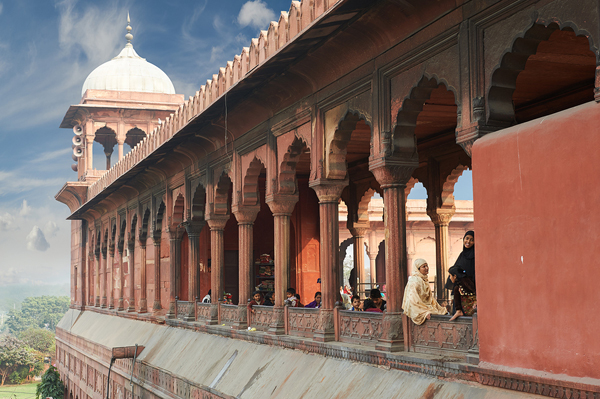
| Apartment Rentals | Rent for a one-bedroom apartment in the city center can range from ?25,000 to ?50,000 per month. Rent for a three-bedroom apartment in the city center can range from ?50,000 to ?1,00,000 per month. Rent for a one-bedroom apartment outside the city center can range from ?15,000 to ?30,000 per month. Rent for a three-bedroom apartment outside the city center can range from ?30,000 to ?60,000 per month. |
| Apartment Purchases | The cost of purchasing an apartment in Mumbai can range from ?50 lakhs to ?2 crores, depending on the size and location of the property. The cost of purchasing a house in Mumbai can range from ?1 crore to ?5 crores, depending on the size and location of the property. |
| Transportation | The cost of public transportation in Mumbai is very affordable. A single ride on the local train costs ?10, while a monthly pass costs ?1,000. A single ride on the bus costs ?7, while a monthly pass costs ?500. A taxi ride within the city costs ?20 per kilometer. |
| Groceries | The cost of groceries in Mumbai is relatively low. A kilogram of rice costs ?50, a kilogram of potatoes costs ?30, a liter of milk costs ?30, and a dozen eggs costs ?60. A kilogram of chicken costs ?120, a kilogram of beef costs ?200, and a kilogram of fish costs ?150. |
| Restaurants | The cost of eating out in Mumbai is relatively low. A meal at a mid-range restaurant costs ?500 per person, while a meal at a fast food restaurant costs ?200 per person. A cup of coffee costs ?50, while a bottle of beer costs ?150. |
| Utilities | The cost of utilities in Mumbai is relatively low. The average monthly cost of electricity is ?1,500, while the average monthly cost of water is ?500. The average monthly cost of internet is ?1,000, while the average monthly cost of mobile phone service is ?500. |
| Private School Tuition | The cost of private school tuition in Mumbai varies depending on the school. The average annual tuition for preschool is ?50,000, while the average annual tuition for elementary school is ?1,00,000. The average annual tuition for middle school is ?1,50,000, while the average annual tuition for high school is ?2,00,000. |
Monthly Budget for Retirees in Mumbai
“The cost of living in Mumbai is generally considered to be high. Rent prices are particularly expensive, with the average one-bedroom apartment costing around $1,000 USD per month. Groceries and other daily necessities are also relatively expensive, with the cost of food and other items being comparable to that of other major cities. Transportation costs are also high, with the cost of a monthly pass for public transportation being around $50 USD,” said one expat living in Mumbai.
Can I live in Mumbai on $1,500 a month?
“I’ve been living in Mumbai for a few years now, and I can tell you that it’s possible to live on $1,500 a month, but you’ll have to make some sacrifices. First, you’ll need to find a place to live that’s affordable. Some of the more expensive neighborhoods like Bandra, Juhu, and South Mumbai might be out of your budget, so you’ll want to look at areas like Andheri, Goregaon, or even Navi Mumbai. These areas are more affordable and still have decent amenities.You’ll also need to be mindful of your spending on food and entertainment. Eating out at fancy restaurants can be expensive, so you’ll want to cook at home more often or eat at more budget-friendly places. Street food in Mumbai is delicious and affordable, so that’s always an option. For entertainment, you might have to cut back on going to the movies or attending events, but there are still plenty of free or low-cost activities to enjoy, like visiting parks, beaches, and local markets.Transportation can also be a significant expense, so you’ll want to use public transportation like buses and trains instead of relying on taxis or rideshare services. It might take some getting used to, but it’s a much more affordable option.Lastly, you’ll need to be mindful of your utility usage, as electricity and water can be expensive. Make sure to turn off lights and appliances when not in use and try to conserve water as much as possible.Overall, living in Mumbai on $1,500 a month is doable, but you’ll need to be conscious of your spending and make some sacrifices. It might take some adjusting, but you can still enjoy a comfortable life in this vibrant city,” commented an expat living in Mumbai.
Can I live in Mumbai on $3,500 a month?
“I’ve been living in Mumbai for a few years now, and I can tell you that it’s definitely possible to live comfortably on $3,000 a month, but you’ll have to make some adjustments and sacrifices. First, let’s talk about housing. If you want to live in a more upscale neighborhood like Bandra, Juhu, or South Mumbai, you’ll have to shell out a significant portion of your budget for rent. However, if you’re willing to live in more affordable areas like Andheri, Goregaon, or Powai, you can find decent apartments for a much lower price. I currently live in Andheri, and I pay around $800 for a 2BHK apartment, which is quite spacious and comfortable.Next, let’s talk about transportation. Mumbai has a pretty good public transportation system, with local trains, buses, and auto-rickshaws being the most common modes of transport. However, they can get quite crowded during peak hours, so you might want to consider using Uber or Ola cabs for a more comfortable commute. I usually spend around $150 a month on transportation, which includes a mix of public transport and cabs.When it comes to food, Mumbai has a wide variety of options, from street food to high-end restaurants. If you’re willing to eat at local eateries and try street food, you can save a lot of money on food expenses. I usually spend around $300 a month on food, which includes groceries, eating out, and ordering in occasionally.For entertainment, there are plenty of options like movie theaters, shopping malls, and nightlife spots. However, these can be quite expensive, especially in the more upscale neighborhoods. I usually budget around $200 a month for entertainment, which includes going out with friends, watching movies, and shopping.Lastly, you’ll need to factor in utilities and other miscellaneous expenses like internet, mobile phone, and healthcare. I spend around $100 a month on utilities and another $100 on miscellaneous expenses.So, in total, I spend around $1,650 a month living in Mumbai, which leaves me with a decent amount of savings. However, I’ve had to make some sacrifices like living in a more affordable neighborhood and cutting back on luxury expenses. If you’re willing to make these adjustments, you can definitely live comfortably on $3,000 a month in Mumbai,” said one expat living in Mumbai.
Can I live in Mumbai on $5,000 a month?
“I’ve been living in Mumbai for a few years now, and I can tell you that it’s definitely possible to live comfortably on $5,000 a month, even with modern amenities. However, you might have to make a few sacrifices in terms of location and housing options. For instance, some of the more expensive neighborhoods like Colaba, Bandra, and Juhu might be out of your budget if you want to maintain a certain standard of living. These areas are known for their upscale housing, trendy restaurants, and proximity to the beach, but they can be quite pricey. Instead, I would recommend looking into more affordable neighborhoods like Andheri, Powai, or Goregaon. These areas still have a good mix of modern amenities, such as shopping malls, restaurants, and entertainment options, but the cost of living is significantly lower. You can find a decent 2-3 bedroom apartment in these areas for around $1,000 to $1,500 per month, which should leave you with plenty of money for other expenses.In terms of sacrifices, you might have to deal with longer commutes if you work in the city center, as these neighborhoods are located further away from the main business districts. Traffic in Mumbai can be quite challenging, so you’ll need to factor that into your daily routine. Additionally, while these areas are generally safe, they might not have the same level of security and exclusivity as some of the more expensive neighborhoods.Another thing to consider is that while you can find modern amenities in Mumbai, they might not always be up to the same standard as what you’re used to back home. For example, power outages can be more common, and the quality of tap water might not be as high. However, these are relatively minor inconveniences that can be easily managed with a little bit of planning and adaptation.Overall, I think you can definitely live comfortably on $5,000 a month in Mumbai, as long as you’re willing to be flexible with your housing and location choices. The city has a lot to offer in terms of culture, food, and entertainment, so I’m sure you’ll enjoy your time here,” commented an expat living in Mumbai.


